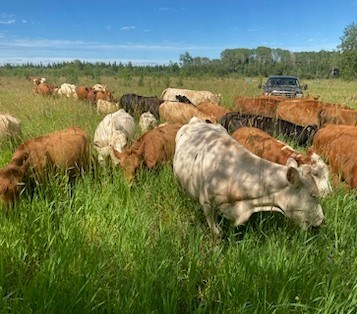THUNDER BAY - Though the elimination of Canada's supply-management system for milk production has been touted in some circles as a way of placating U.S. President Donald Trump in the ongoing Canada-U.S. trade war, at least one veteran producer believes doing so would end on a sour note.
Bernie Kamphof, who operates an Oliver Paipoonge farm with more than 250 cows, says switching to the free-market American system would be a one-way road to instability for farmers, milk consumers and even taxpayers.
"The 'open' market system in the U.S. encourages over-production, which then inevitably causes large price crashes, which then necessitates government bailouts to struggling farmers," Kamphof wrote in a recent email.
"The (American) dairy industry is rapidly consolidating into large operations with thousands of cows each in order to be able to survive the chaotic markets."
There are nearly 3,300 dairy farmers in Ontario, with about 20 of those operating within a short drive from Thunder Bay in areas like the Slate River Valley.
According to the Canadian Diary Commission, the cost to purchase a dairy milk quota in Ontario — the roughly 60-year-old system that guarantees farmers a set price for their milk — is currently $24,000 per cow.
In some parts of the U.S., Kamphof says, "milk buyers have decided to consolidate and simply tell farmers they will no longer pick up their milk."
"This has resulted in farmers having to close up and sell their cows because they are unable to find a processor willing to buy their milk."
Kamphof added: "Cows cannot simply be turned off or put on idle if a buyer decides they don't need a farm's milk for a period of time."
The predictability of the Canadian quota system also helps curb price swings at the grocery store, although the dairy commission says it's only one factor in determining how shelf prices are set.
"Only the price of milk that farmers get is regulated," the commission said in a recent backgrounder.
"After milk leaves the farm, it enters the market where supply, demand and other factors influence the price," including profits sought by grocery-store chains.
In 2024, the average annual consumer price index for dairy products increased by two per cent, compared to 3.4 per cent for all food products, the commission said.
Dairy farming remains a big business in Canada, accounting for more than $8 billion in net farm cash receipts in 2022, according to commission data.
Nationally, about 1.4 million cows maintained at more than 9,700 dairy farms produce about 26 million hectolitres of fluid milk, nearly 500,000 tonnes of cheese, 371,000 tonnes of yogurt and 152,000 tonnes of hard ice cream.
Critics of Canada's quota system for dairy charge it leads to milk being dumped if farmers produce too much; but the system's supporters say dumping can be curtailed through careful farm management.
Kamphof, meanwhile, says he's trying to stay optimistic about the future of the country's dairy industry as trade talks with the Trump administration loom.
"I hope that once the (Canadian) election is over, our new prime minister can sit down with President Trump and work together to come out with a trade deal that is helpful to both countries," Kamphof said.
"As dairy farmers, we will do our best to adapt to changes and new challenges as we always have."
The Chronicle Journal / Local Journalism Initiative
